Chores Around Town: Difference between revisions
| Line 31: | Line 31: | ||
Fumbling around with thick mitts, pens and paper in the cold, while sled runners need to be replaced, knots need to be tied, and qamutiks need to be repaired, quickly eliminates the feasibility of (ethnographic) documenting. What remains, is attentive presence, and hands-on assistance where possible. | Fumbling around with thick mitts, pens and paper in the cold, while sled runners need to be replaced, knots need to be tied, and qamutiks need to be repaired, quickly eliminates the feasibility of (ethnographic) documenting. What remains, is attentive presence, and hands-on assistance where possible. | ||
[[File:Preparing the Qamutiq.jpg|thumb|Preparing the qamutik (photograph by | [[File:Preparing the Qamutiq (sm).jpg|thumb|Preparing the qamutik (photograph by de Wildt, 2021)]] | ||
[[File:Repacking the Qamutiq on the way.jpg|thumb|One of many moments that the qamutik needed to be repacked on the way (photograph by | [[File:Repacking the Qamutiq on the way.jpg|thumb|One of many moments that the qamutik needed to be repacked on the way (photograph by de Wildt, 2021)]] | ||
=Camping at the Weir= | =Camping at the Weir= | ||
Revision as of 16:41, 18 July 2025
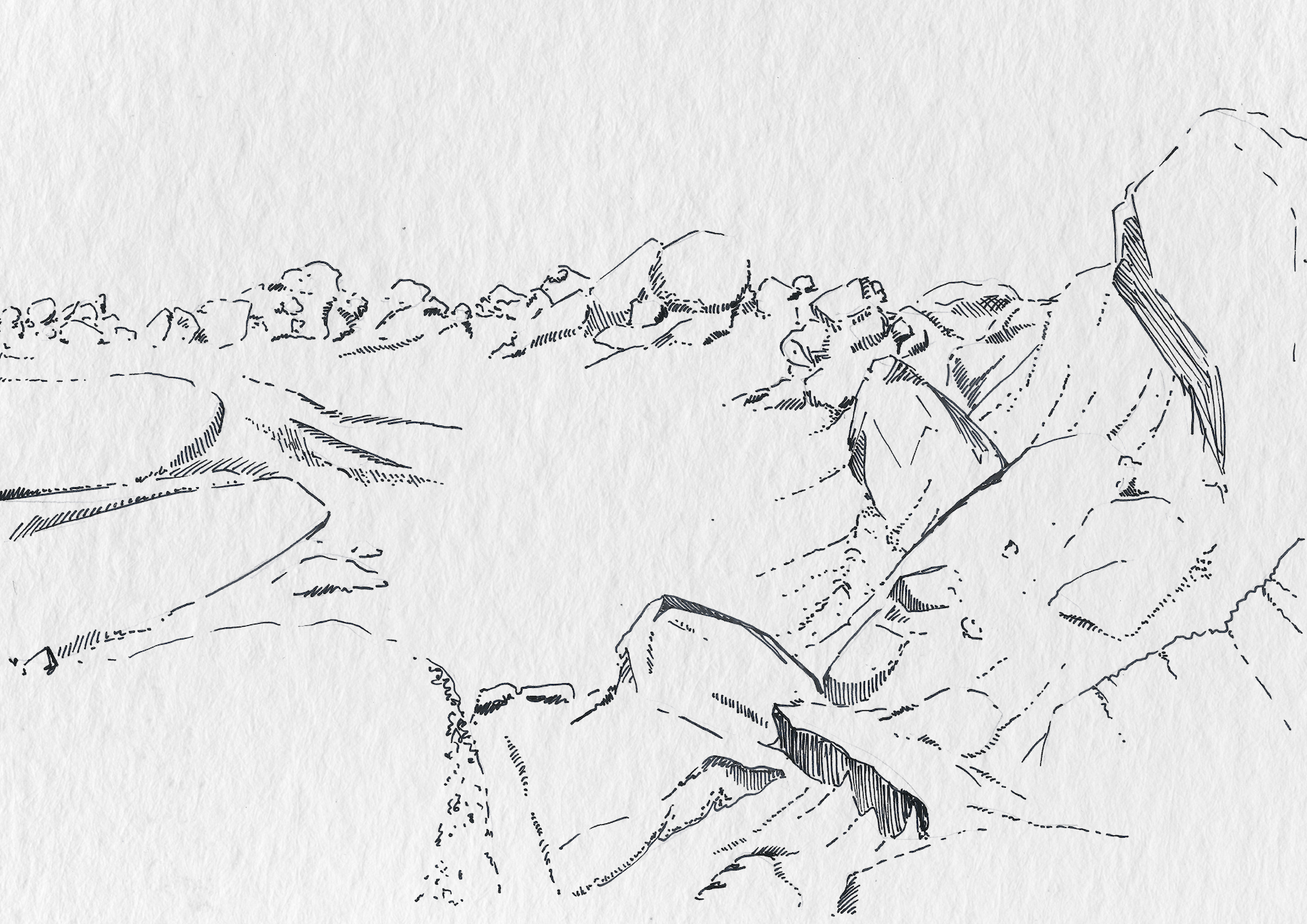
Being present in the community has taken many shapes for me over the course of my multiple field visits. In Gjoa Haven such presence has often taken shape around activities that are part of Inuit day to day life.
In the first week, when BearWatch researchers were present in Gjoa Haven in larger numbers, we for example helped George Konana take out his nets.

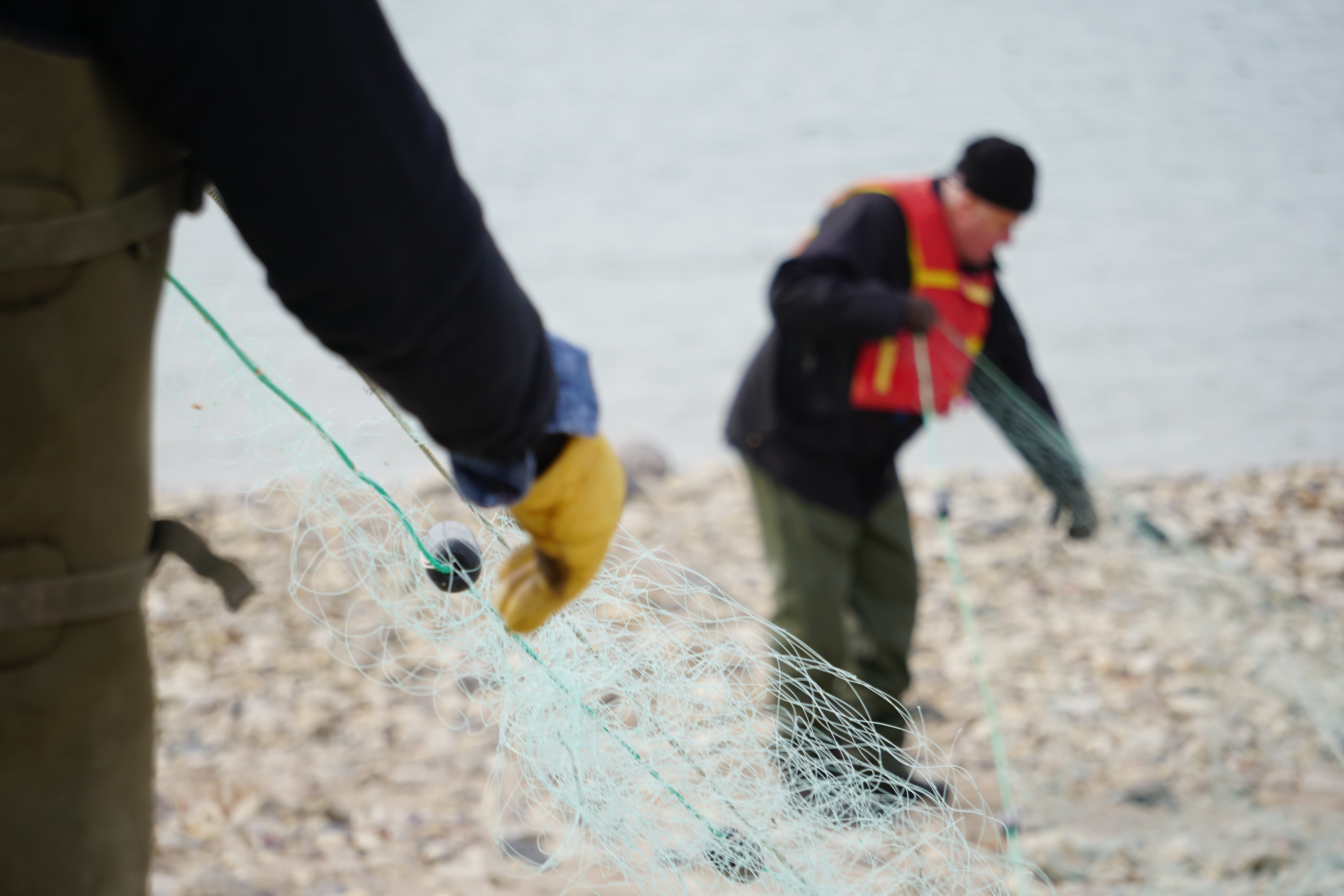
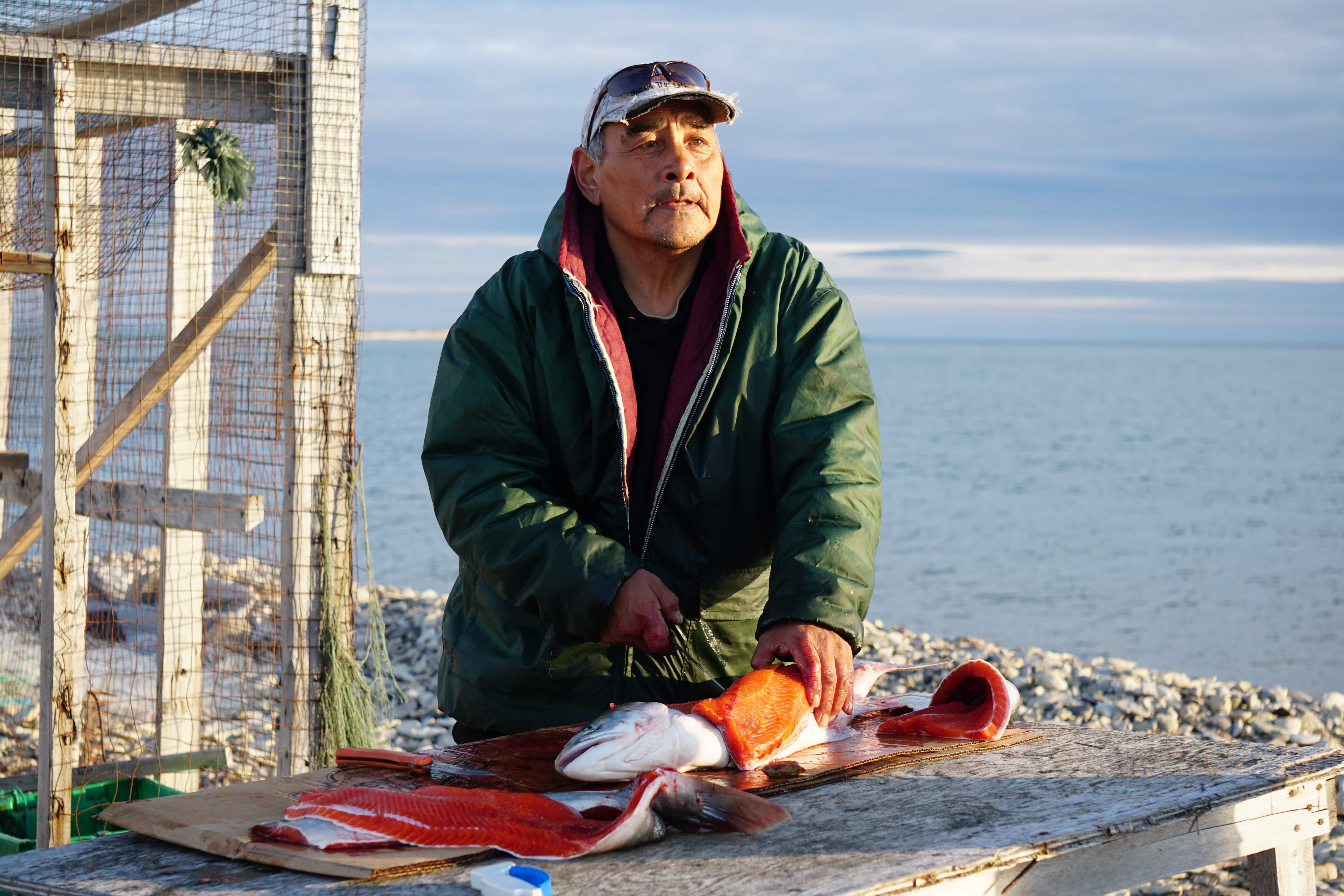
Stranding the Car
Most possibilities to get involved with chores around town and meeting people involved an old truck, the elements, and project-related logistics that had me drive across town for multiple purposes.
These activities created both possibilities and limitations in terms of community interaction patterns.
For example, the collective efforts required to pull the truck out of the ocean, when it stranded on the beach and got flooded by the rising tide of the ocean, is part of what co-PI van Coeverden-de Groot terms his “vulnerability narrative”. A performance of intra-dependency he understands his relationship with the community at large to be comprised of.
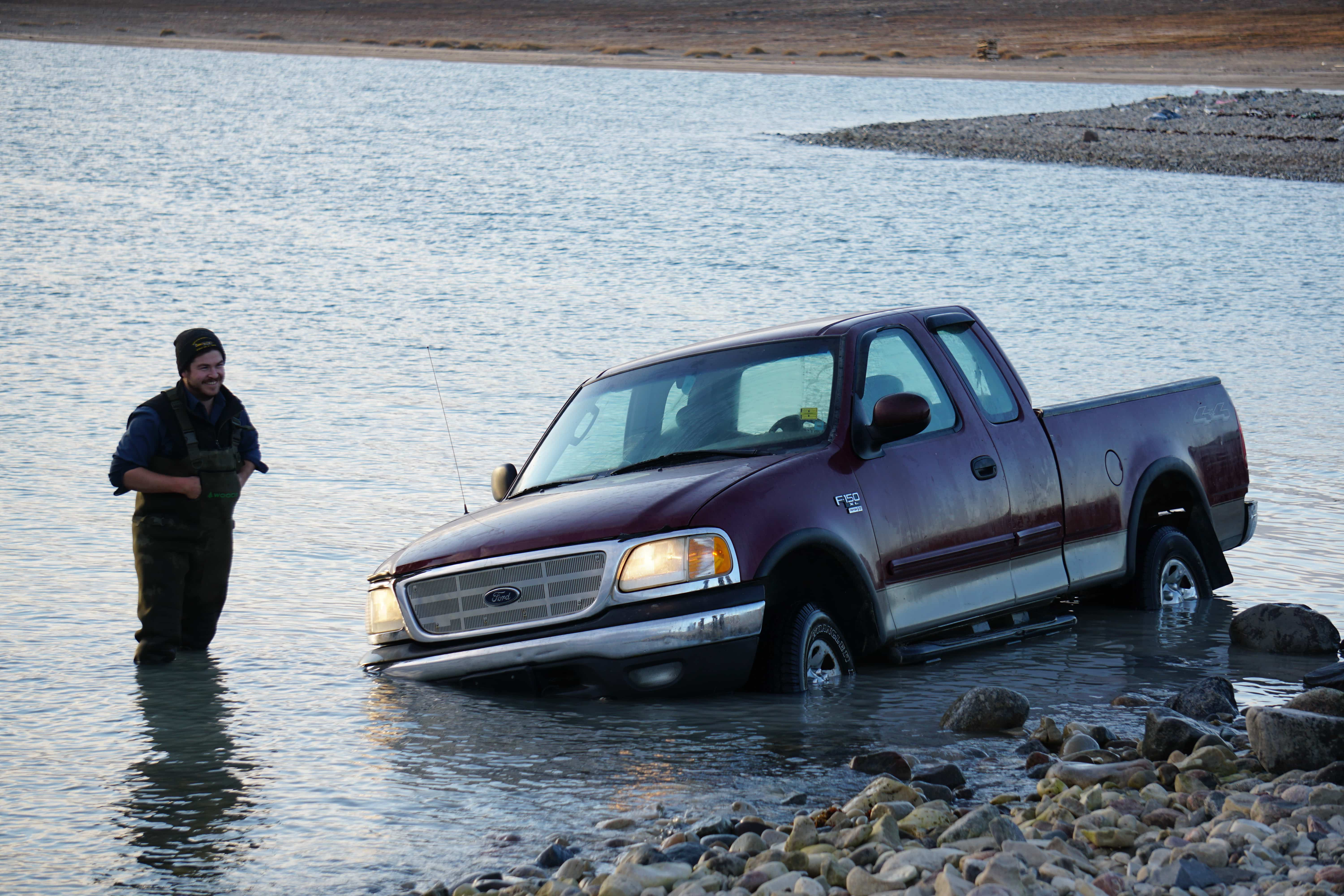
Preparing and Packing for an ATV Ride
The environmental conditions in Inuit Nunangat seem a fitting context for such a "vulnerability" narrative.
Take, for example, the actions involved with going on a camping trip:
Any visiting researcher who has tried to prepare, pack or pull a qamutik (sled) across the land outside of Arctic Summer for the first time, like I did in the fall of 2021, has likely encountered the particular teachings of patience and modesty.
Fumbling around with thick mitts, pens and paper in the cold, while sled runners need to be replaced, knots need to be tied, and qamutiks need to be repaired, quickly eliminates the feasibility of (ethnographic) documenting. What remains, is attentive presence, and hands-on assistance where possible.
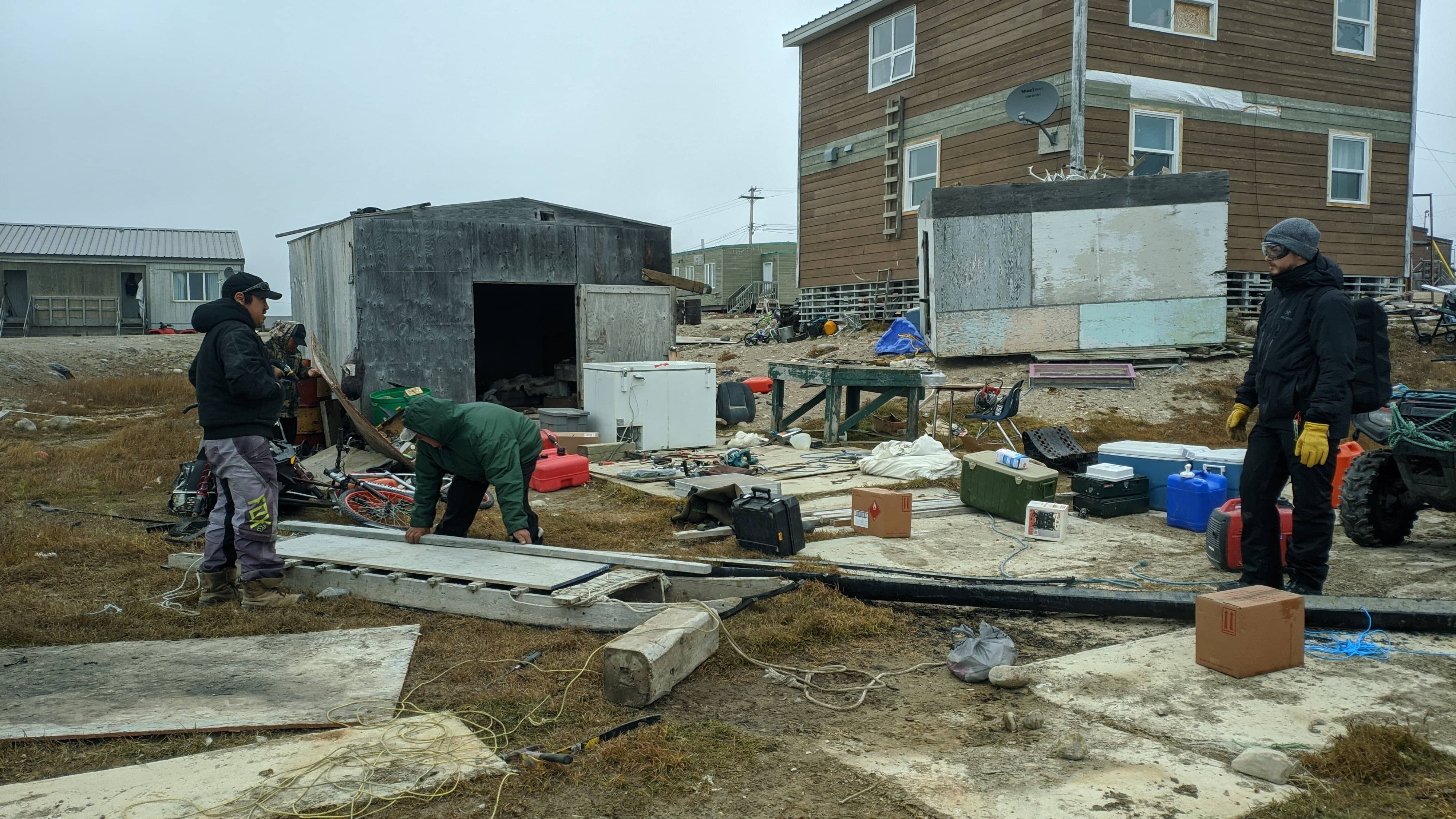

Camping at the Weir
After 4 hours of travelling by ATV, some of it in the dark, we arrive at the fishing Weir.
After setting up the tents we watch George and his family spearfish for a while.
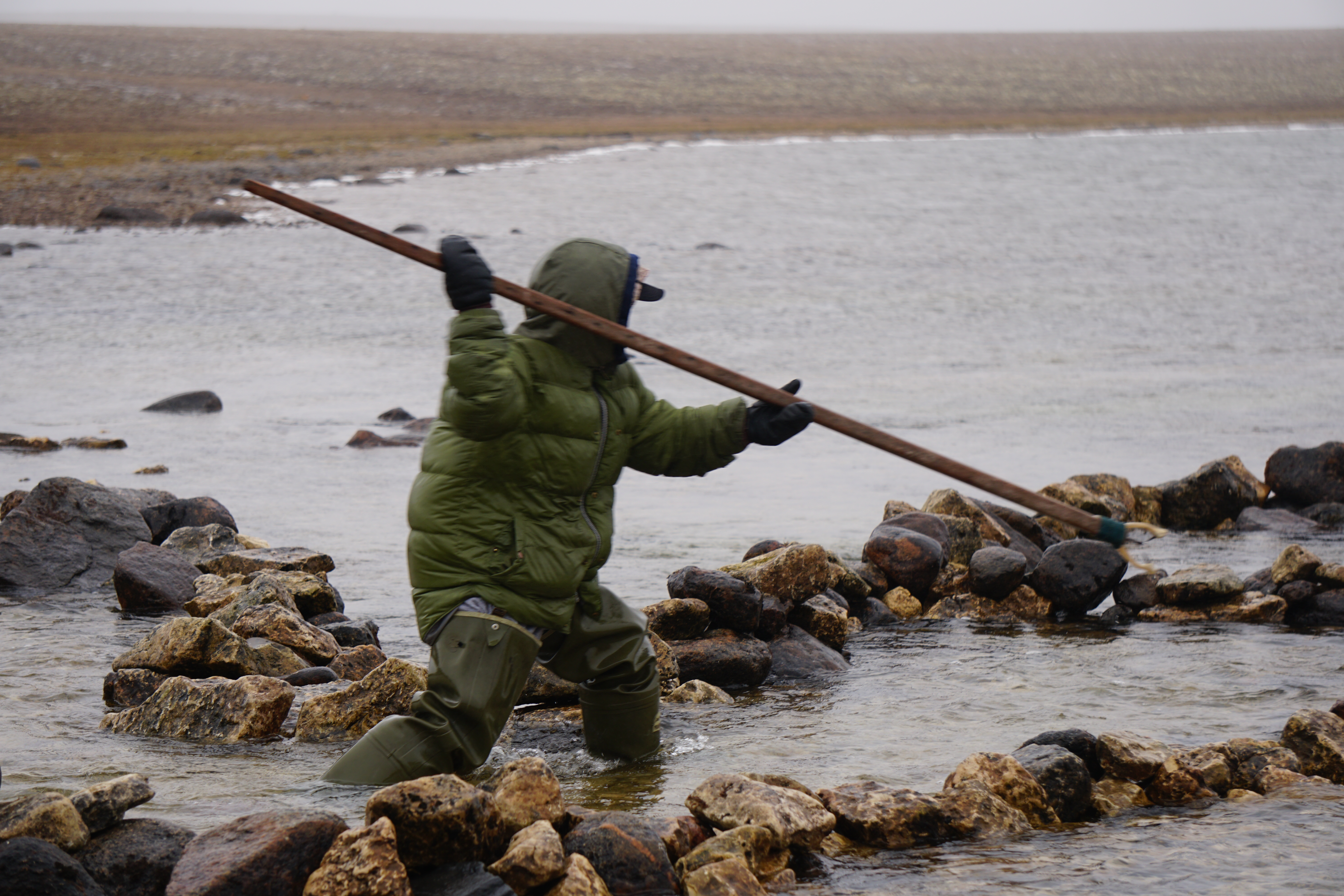
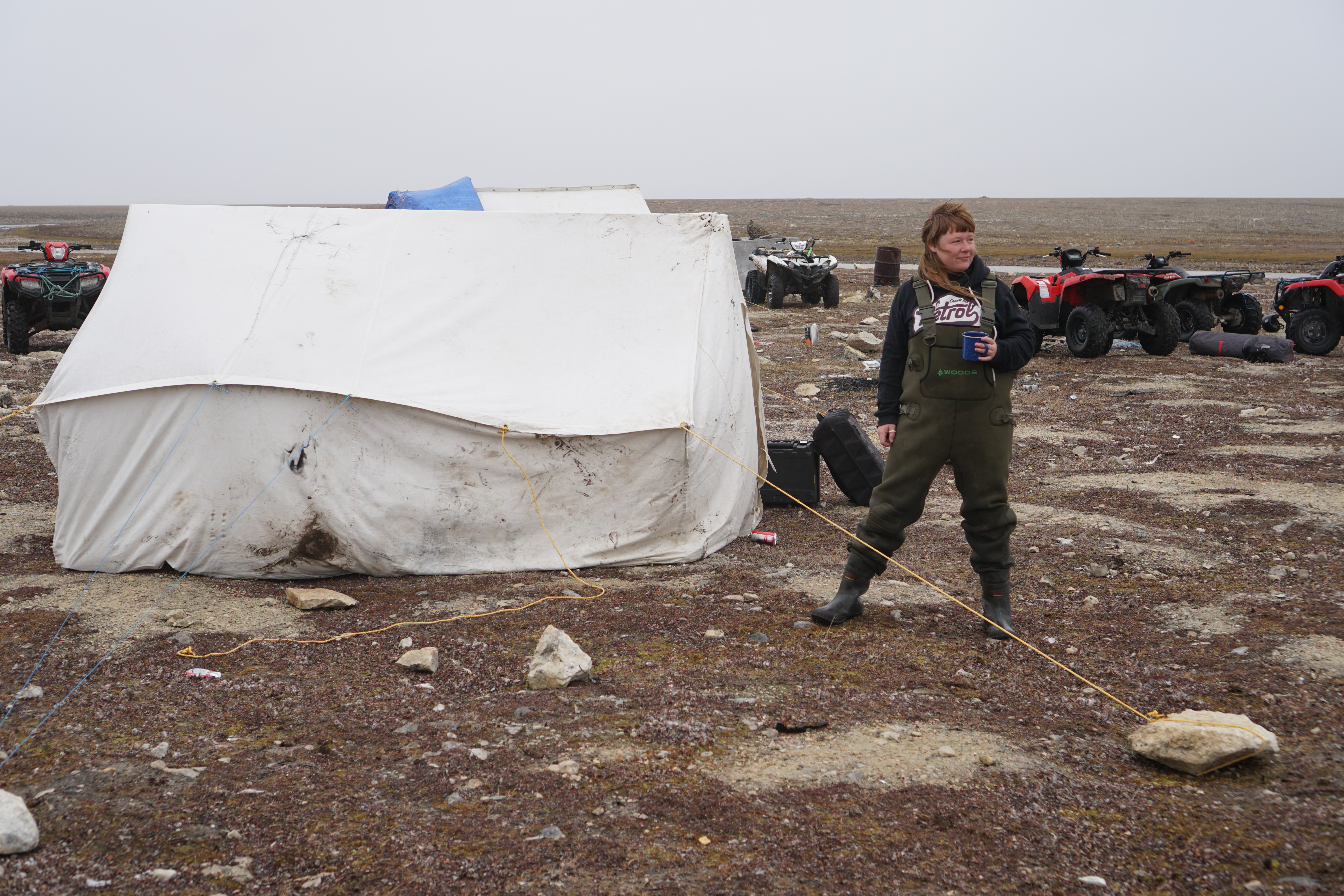
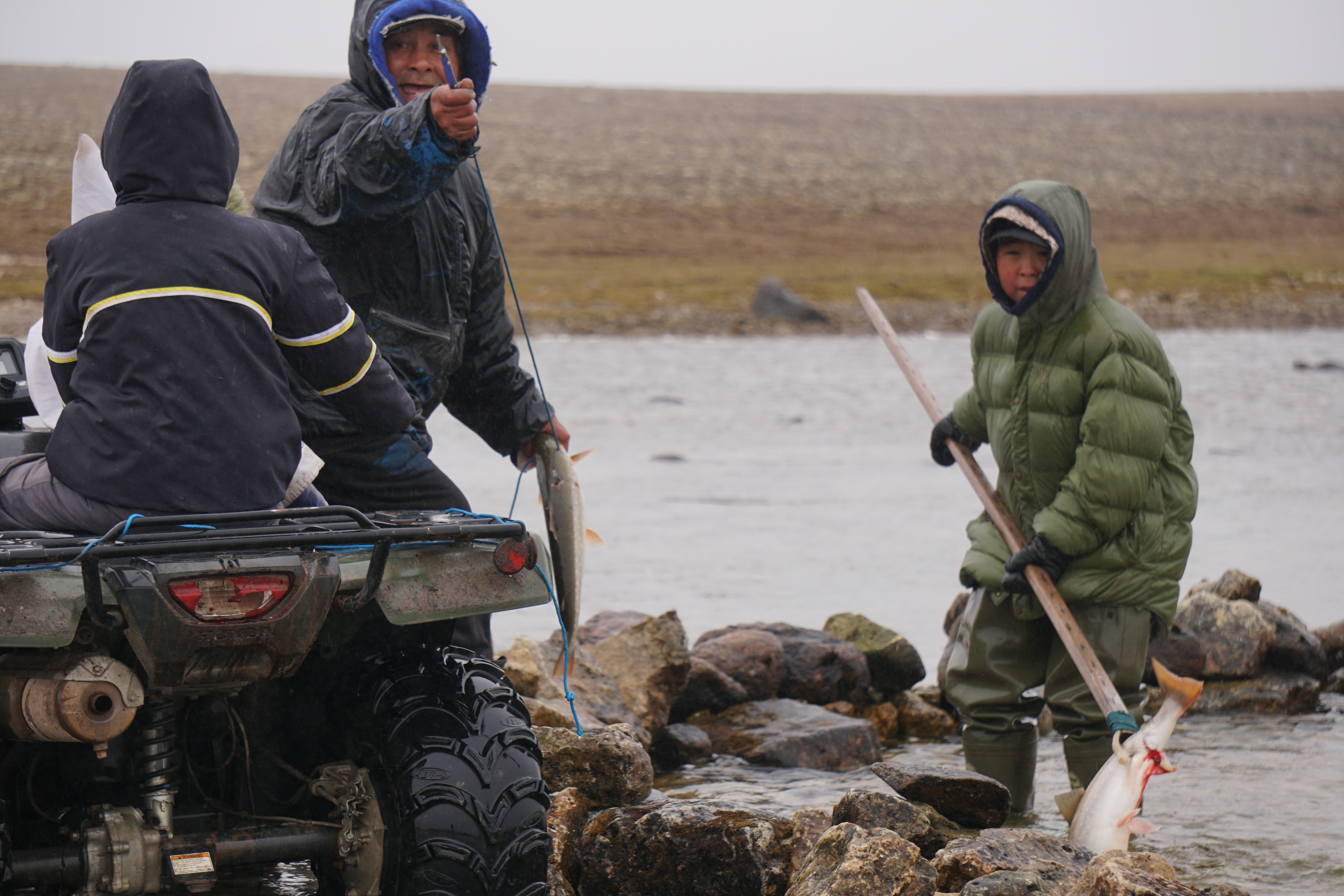
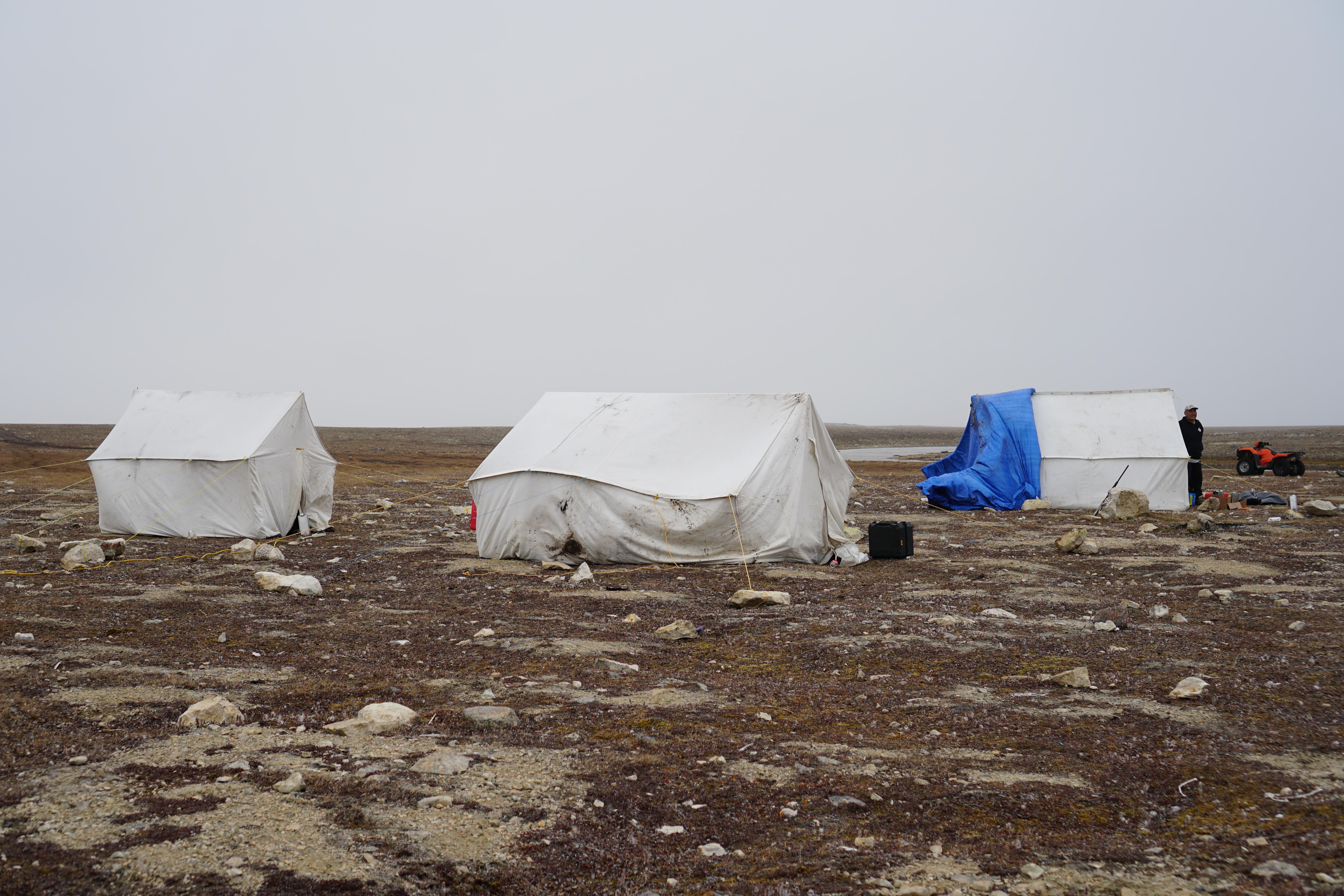
Just tagging along with someone like George for a couple of days allows you to learnt more than could ever be included in a knowledge-land-scape like this, or be transfered through writing or pictures.
The knowledge that is entangled within the tradition of spearfishing for example extends beyond its technique or it practices. It's entangled within a lived moment of human, fish and traditional technology meeting each other that cannot be sustained outside of that moment.
